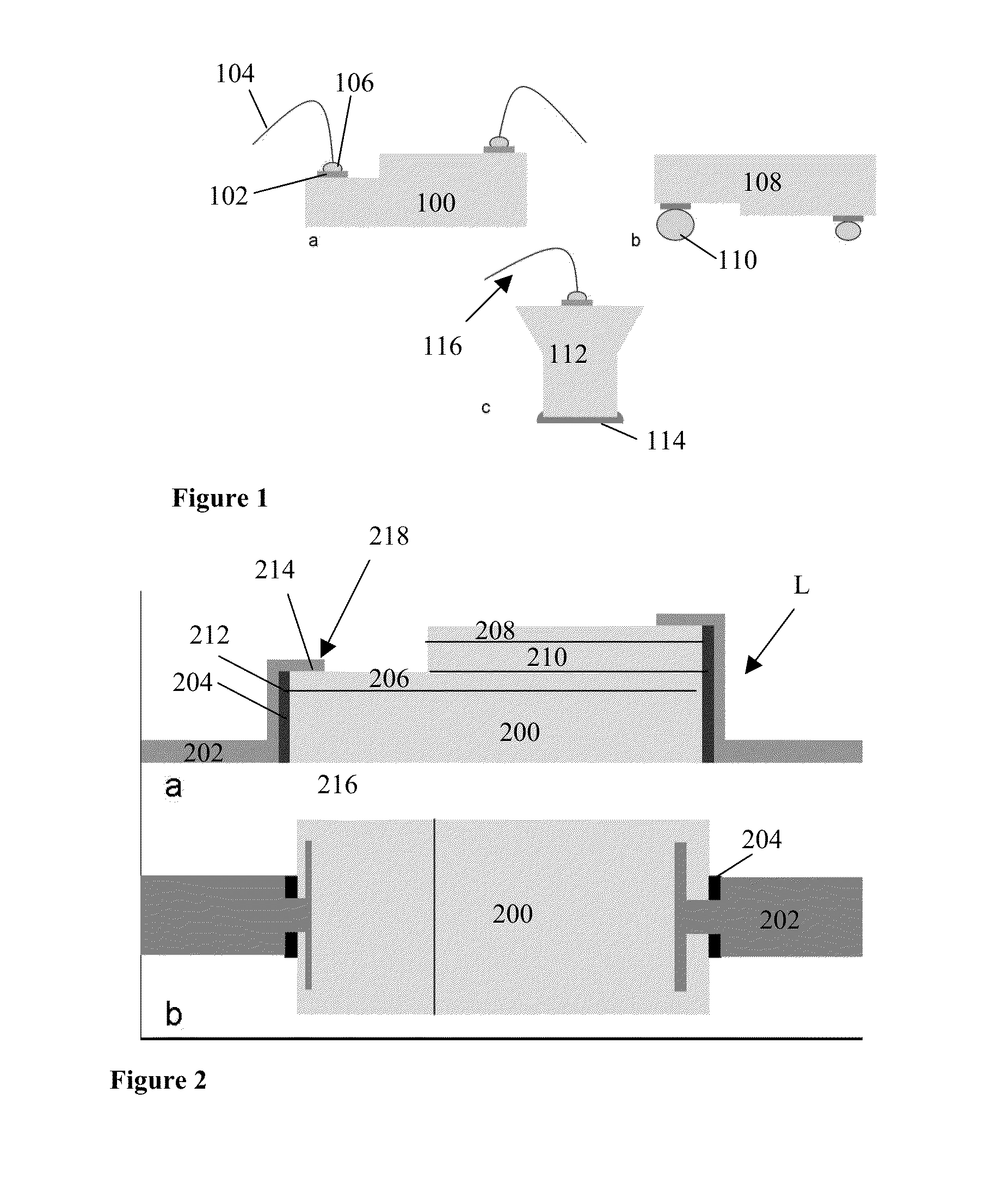Light emitting diode with conformal surface electrical contacts with glass encapsulation
a technology of light-emitting diodes and conformal surfaces, applied in semiconductor/solid-state device manufacturing, semiconductor devices, electrical apparatus, etc., can solve the problems of silicone and epoxy, high-efficiency encapsulation challenges, and wire bonding standard electrical contact of leds that cannot be manufactured, etc., to achieve long-life leds, prevent failures, and high efficiency
- Summary
- Abstract
- Description
- Claims
- Application Information
AI Technical Summary
Benefits of technology
Problems solved by technology
Method used
Image
Examples
example
[0127]The preferred method is a deposition of the conformal metal contacts 202 over a sidewall 212 that has previously been coated by a low optical loss dielectric 204. For high temperature encapsulation of LEDs, a refractory metal, such as tungsten, is preferable for the conformal metal contacts 202, to prevent damage to the contacts 202 during encapsulation with glass. Ideally, full glass encapsulation can be achieved on a header, with the glass being deposited in a fashion similar to that of current epoxy and silicone encapsulants (e.g., by injection molding, frit reflow or other molding methods). In the case where the LEDs cannot be subjected to the high temperatures of the glass, or glass functionality is not able to be achieved with direct molding, glass preforms can be created with the desired package dimensions and functionality, and bonded to the LED with an intermediate medium 508 (where the intermediate medium may be comprised of a silicone, epoxy, sol-gel glass or simila...
PUM
 Login to View More
Login to View More Abstract
Description
Claims
Application Information
 Login to View More
Login to View More - R&D
- Intellectual Property
- Life Sciences
- Materials
- Tech Scout
- Unparalleled Data Quality
- Higher Quality Content
- 60% Fewer Hallucinations
Browse by: Latest US Patents, China's latest patents, Technical Efficacy Thesaurus, Application Domain, Technology Topic, Popular Technical Reports.
© 2025 PatSnap. All rights reserved.Legal|Privacy policy|Modern Slavery Act Transparency Statement|Sitemap|About US| Contact US: help@patsnap.com



